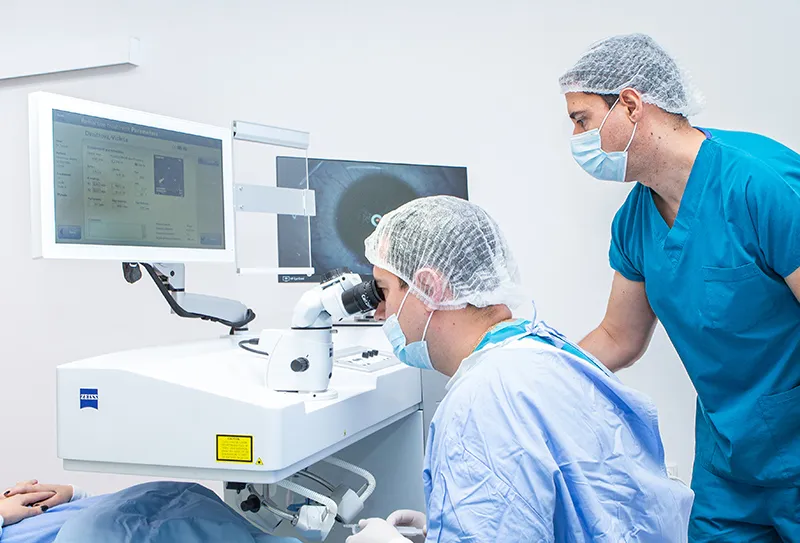Laser vision correction
What is laser vision correction?
The laser vision correction is fast, safe and virtually painless procedure.
It is natural to be afraid of a medical procedure, which involves your eyes. With the laser vision correction, however, you should not be, as this is one of the most harmless and safest procedures in the world – improved over the generations.
- The laser corrects the optical power in seconds
- No blades are used, so practically there is no pain
- We use the latest laser technologies in the world
- The laser procedure is one of the most accurate medical procedures in the world
- The safety of the laser eye correction has been tested from end to end for many years
- The laser surgeries hold a record for safety and success rate
Femto-LASIK
Laser vision correction on highest standard
Not all laser procedures are the same. The different clinics use different technologies and protocols when performing the components of the laser eye correction.
There is a laser procedure trusted by those people, who want even more crystal and more accurate vision – Femto-LASIK. The procedure combines the advantages of several high-tech laser devices, to provide precision, safety and results, unsurpassed in all aspects.
SMILE
Laser vision correction in the next generation
Laser procedure, which combines all the advantages of Femto-LASIK and does not require several laser devices to correct the diopters, but only one – Visumax 800.
SMILE is considered to be “further developed Femto-LASIK” but only one in five laser vision correction candidates is suitable for this procedure. The “lucky ones” would benefit not only from the precision and safety of the procedure but also from the provided maximum comfort.
Life without glasses and contacts
You will feel a great change in your vision from the first day after the laser correction, and with every other day you will see more and more clearly. Within a month after the procedure you need to put drops in your eyes, and must not use public swimming pools and practice contact combat sports.
We are always at your service for follow-up exams, as the medical exam on the first day after the procedure is mandatory, and around the 30th day it is recommended to have another one.
Equipment
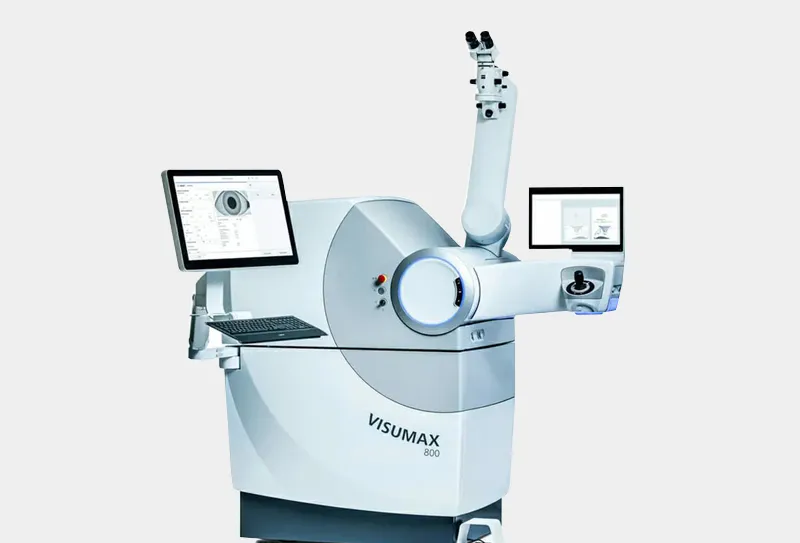
Femtosecond laser Carl-Zeiss Visumax 800
Carl-Zeiss Visumax 800 is used for precise preliminary laser preparation of the eyes, for the actual correction of nearsightedness, farsightedness and astigmatism in Femto-LASIK treatments.
The sophisticated software of the femtosecond laser Visumax 800 enables it to treat refractive errors of the eyes by itself with the laser vision correction procedure SMILE. In such cases further treatment with an excimer laser is not required.
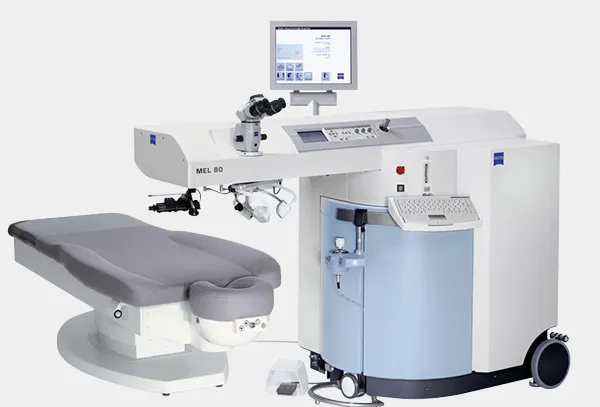
Excimer laser Carl-Zeiss MEL 90
Carl-Zeiss – MEL 90 Laser System is one of the latest and most precise systems for laser correction of the vision. It is an excimer laser, and is used for the actual correction of the eye.
As far as the safety is concerned, MEL 90 Laser System has improved eye-tracker system, faster than any eye movement.
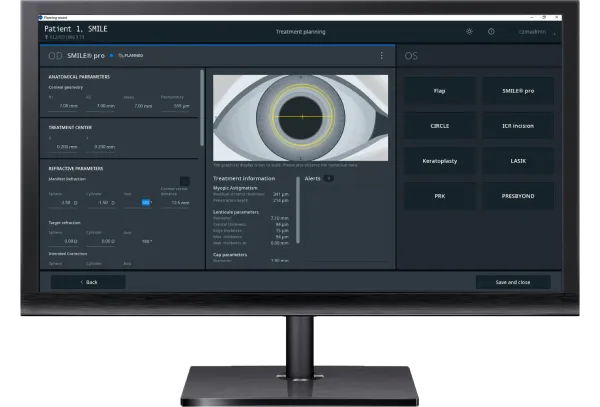
Carl-Zeiss Refractive Workplace
Carl-Zeiss Refractive Workplace unites data from all high-tech diagnostic devices - the ATLAS 9000 and Pentacam HD corneal topographers, the WASCA Analyser aberrometer, the Cirrus 6000 optical coherence tomography scanner, the Corvis ST corneal biomechanics analyzer, and the IOL Master 700 biometer. Each of these devices analyzes specific eye parameters, after which the software builds a complete picture of the person being examined - it is strictly individual, like a fingerprint.
Who is suitable for laser vision correction?
Mandatory tests:
- Vision acuity test (with dilated and constricted pupils)
- Biomicroscopy (examination of the anterior segment of the eye under microscope)
- Autorefractokeratometry (measuring the optical power of the eye)
- Corneal topography (color mapping of the cornea)
- Wavefront analysis (digital representation of higher-order aberrations)
- Pachymetry (measurement of thickness of the cornea)Ophthalmoscopy (eye fundus test)
The laser procedure may be performed only after thorough examination (about 2 hours), during which the parameters of your eye are precisely measured. We will perform the mandatory test with cutting-edge diagnostic equipment.
Based on the performed measurements and analyses, your physician will inform you whether you are suitable for laser eye correction, and then prepare your individual treatment plan (we will use the date of all your tests, which is uploaded in the laser system).
You can schedule an appointment at the reception desk: +359 877 881 115. A week before your appointed time you should stop wearing contact lenses. Please come with a driver/ taxi or use the public transport, because at the end of your examination, your pupils will be dilated and you will not be able to drive.
Nearsightedness
The short-sighted people have problems seeing at far distance, which requires the use of glasses or contact lenses. The nearsighted eye is usually longer (in its anterior-posterior axis) than the normal eye, or its cornea has bigger refractive power. Thus, when the light passes through its optical system it focuses in front of the retina, making the distant objects unclear. The laser correction of nearsightedness offers minimally invasive approach, which reduces the refractory power of the eye and provides normal vision at far distance.
Examination, laser procedure and sparing regimen are the three steps towards your life free of glasses and contact lenses.
Artificial lenses
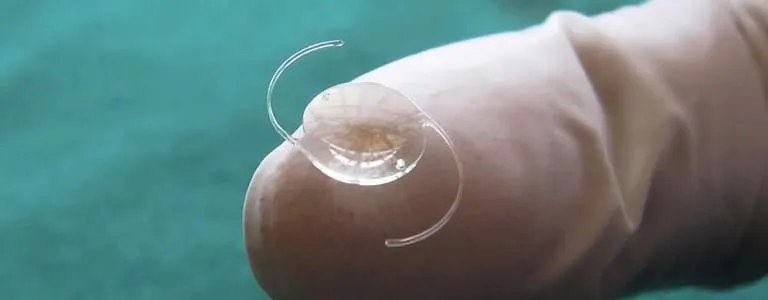
The laser correction is suitable for the most people, who wish to avoid the limitations of the glasses and the contact lenses. In some rare cases, the patients may not be suitable for laser procedure, and therefore it cannot be performed.
Patients at younger age (up to 40 years) are recommended phakic intraocular lenses, which are inserted in front of the human lens behind the iris (the structure responsible for the eye color). They can correct all refractive abnormalities – nearsightedness, farsightedness and astigmatism.
Patients at middle age (over 40 years) prefer implantation of multifocal intraocular lenses.
Your surgery day
- 1On the day of your surgery you should have light breakfast and up to one coffee. Please, do not use makeup and perfume after your morning toilette.
- 2Please, come to our Clinic at the time of your appointment, where our team will put you up in a cozy room.
- 3Before the laser procedure you will meet the medical team, who once again will explain to you the desired laser procedure.Femto-LASIK is performed in two stages:
- Preparation with femtosecond laser (Carl-Zeiss Visumax 800)
- Actual correction with excimer laser (Carl-Zeiss MEL 90 Laser System)
- Actual correction with femtosecond laser (Carl-Zeiss Visumax 800)
- 4You will enter the surgery room and lay on a comfortable bed. You will feel the administration of the anesthetic eye-drops and the cleansing of the area around your eyes with special antiseptic solution. Your eyes will be insensible during the procedure, so you should not feel discomfort at any point.
- 5The doctor will carefully place a special device, which will keep your eyes open during the procedure, so you don’t have to worry about blinking.
- 6You will be asked to look at a green light in the laser device above your head. For a while your vision will get blurred. When the green light becomes clear again, you will be asked to look towards it. It may be a little blurred, but you will easily see it.
- 7You will hear the humming of the laser devices, which indicates the operation of the laser impulses (for about 10-20 seconds depending on your condition). Then the procedure is repeated for the other eye.
- 8The procedure itself takes seconds, but your overall stay in the surgery room will be 20-30 minutes for both eyes – including the preparation time before the laser correction.




